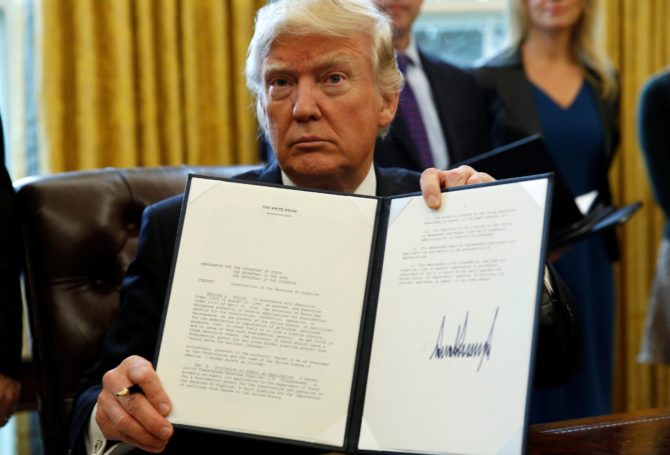
Fruitless negotiations, four presidential executive orders and lots of political sniping left a lot of Americans in a financial lurch. But all may not be lost as insiders say the stalemate has come down to just two issues – the amount of enhanced unemployment compensation and the financial aid package to states and local governments.
After failing to come up with a deal with congressional Democrats last week, President Trump issued four executive orders that prompted sharp criticism, widespread confusion and political cynicism. The biggest question is whether the president has the power to do what he ordered.
Trump’s highest profile order calls for a payroll tax holiday between now and the end of the year for workers earning less than $100,000 annually. Employers would still be obligated to pay their share of the federal payroll tax, which goes toward Social Security and Medicare. The fine print of the executive order indicated the “holiday” is actually only a “deferral” until next year, even though Trump inserted language promising he would seek permanent forgiveness if re-elected in November.
Critics called the payroll tax holiday a “minefield of tax issues”. They say Trump’s legal authority to waive the payroll tax is questionable, businesses could wind up being on the hook for deferred payroll taxes and, even if applied, the deferral would do little to help Americans out of work. Some business executives have signaled they will ignore the order and keep collecting the employee portion of the payroll tax. “This is not a holiday, because there’s a bill at the other end of it,” Isaac Boltansky, an analyst with the research firm Compass Point, told The New York Times.
The deferral and promise to make the payroll tax cut permanent also have been attacked as thinly veiled ways to defund Social Security and Medicare.
The other contentious executive order proposes to continue enhanced unemployment payments at $400 per week. Eligible jobless claimants received $600 per week under CARES Act provisions until congressional authorization expired July 31. Trump officials would pay for the extended cash benefits by redirecting up to $44 billion from congressionally approved FEMA disaster relief funds, a somewhat untimely move in light of the East Coast destruction caused by Hurricane Isaias and the onset of hurricane season.
This is not a holiday, because there’s a bill at the other end of it.
Another potential clinker is the requirement that already cash-strapped states pay one-fourth of the enhanced unemployment compensation, which if they are enable would shrink the payment to $300 per week. California Governor Gavin Newsom said his state doesn’t have the $700 million per week in surplus funds to pay the $100 per week portion of Trump’s payment plan
The other two executive orders dealt with evictions and foreclosures and with student loans. The CARES Act banned eviction filings until July 25 on properties backed with federal mortgage support. Trump’s order asks federal officials to consider measures to prevent evictions, but it stops short of actually extending the ban. The student loan executive order would extend the waiver of interest payments until the end of the year, but the order only applies to loans held by the Department of Education, not by private banks.
While the purpose of the executive orders may have been partially politics and partially an attempt to gain leverage, the confusion and pushback may subvert both aims. The best path forward remains a negotiated deal between Democrats, Republicans and Trump.
If insiders are right about only two sticking points, then a compromise may boil down to arithmetic – not just the final numbers in the deal, but the votes to pass the deal in both the House and Senate. The real hitch in negotiations has been in the Senate GOP caucus where reportedly half of its members won’t vote for any additional financial relief. That means Senate Majority Leader is a general with only half an army and will need to get Democratic votes to pass a compromise. That gives more leverage to Democrats and explains why Democratic leaders have refused to go along with a short-term or narrow package.
Democrats in the House approved continuation of $600 per week in enhanced unemployment compensation and $915 billion in aid for state and local government. Trump officials apparently are okay with $400 per week jobless benefits and another $150 billion for state and local government. Both Democratic and Republican plans provide another round of $1,200 payments to low- and middle-income individuals and smaller payments for children.
No further negotiations are planned this week, but that could change, spurred perhaps by the start of the Democratic presidential nominating convention next week, which could put pressure on all sides to reach an accommodation.



